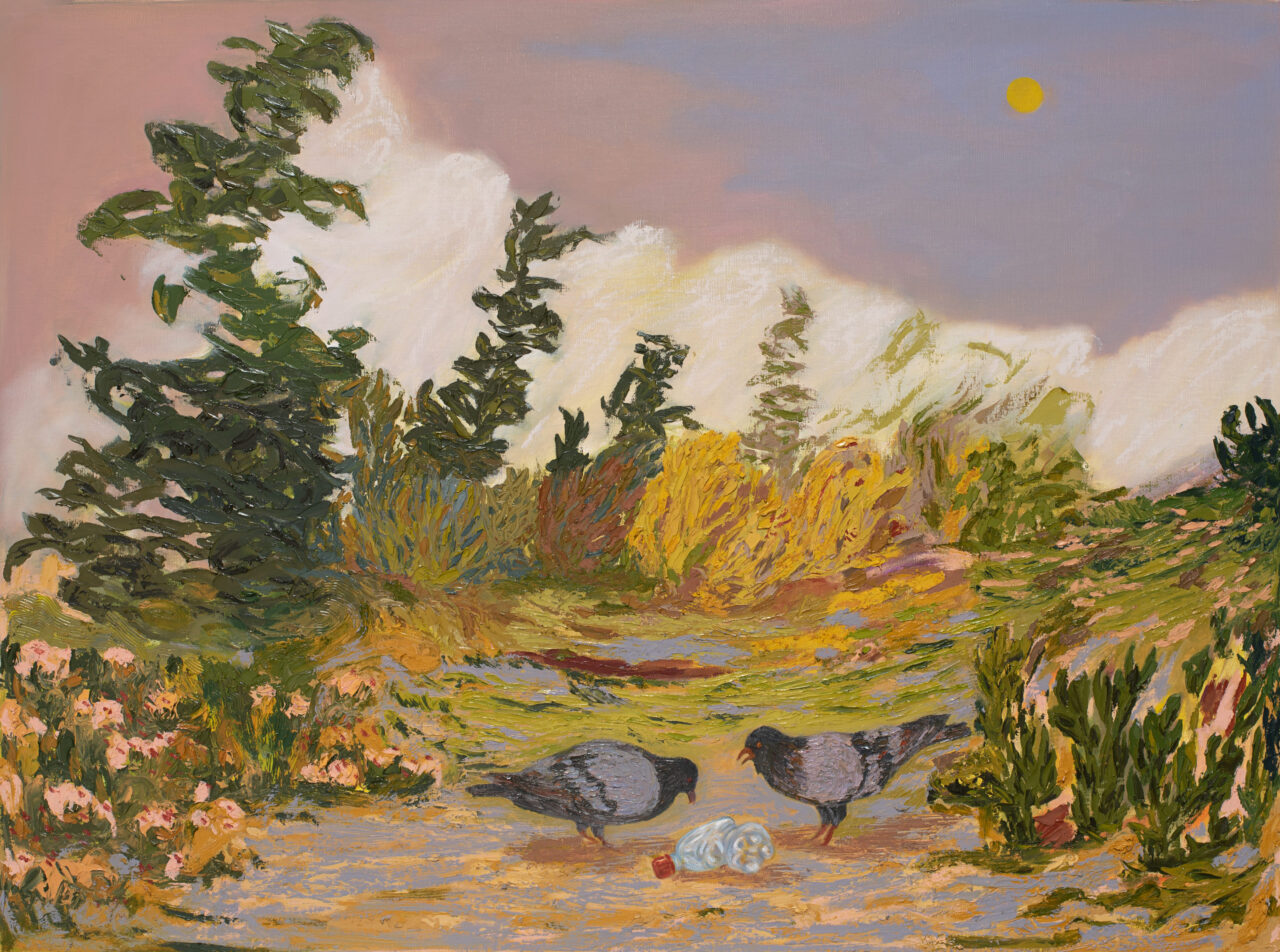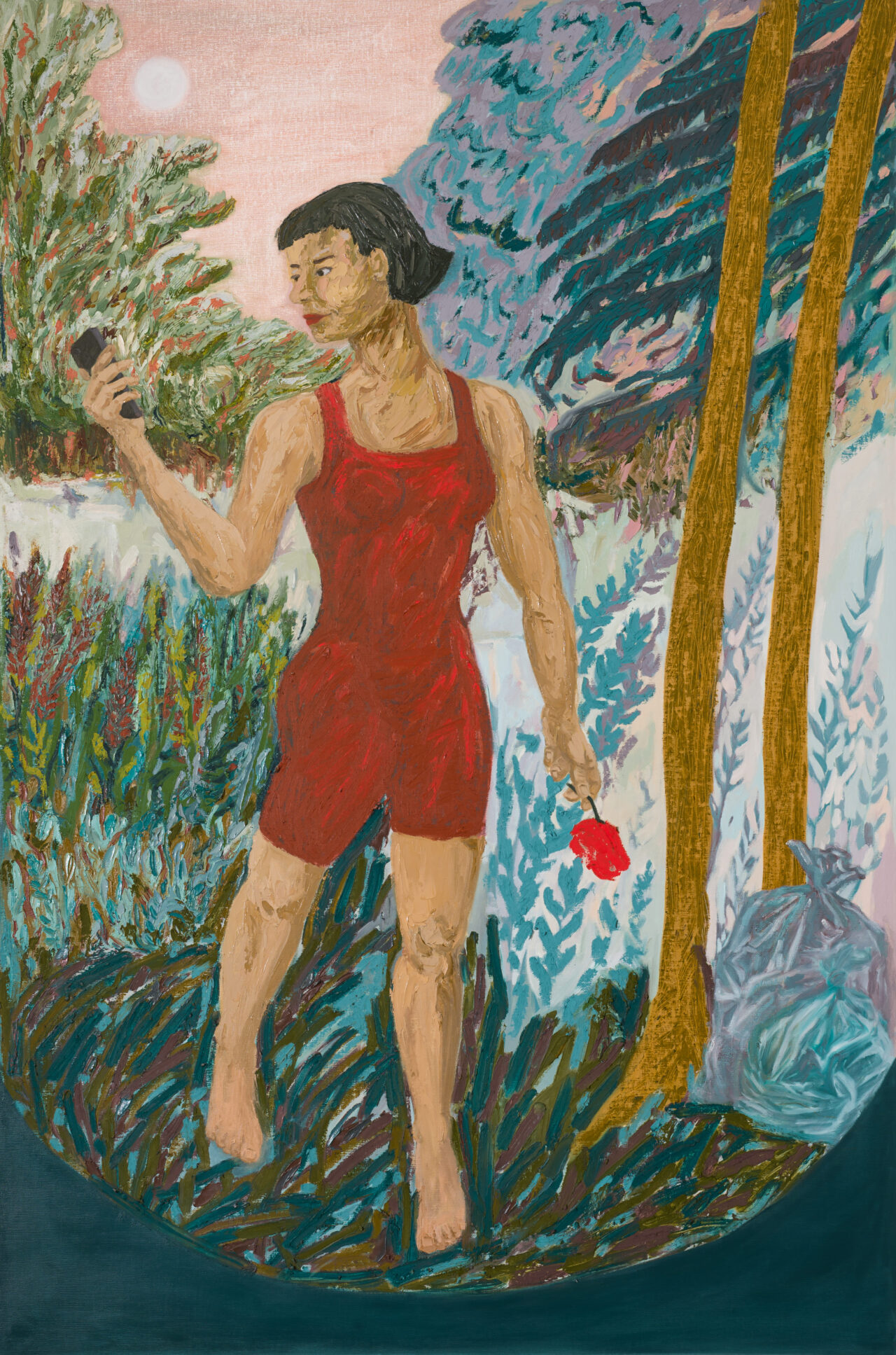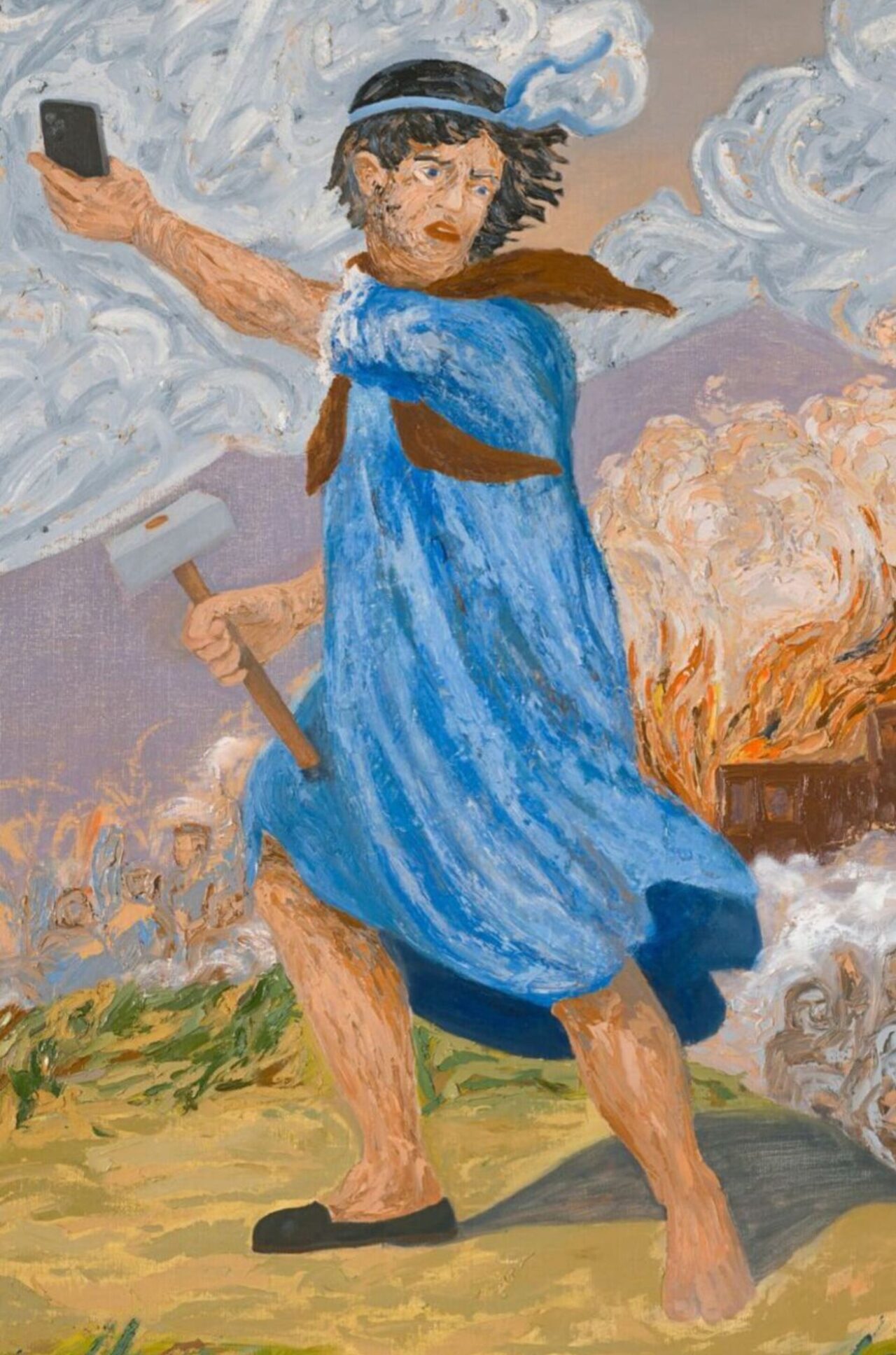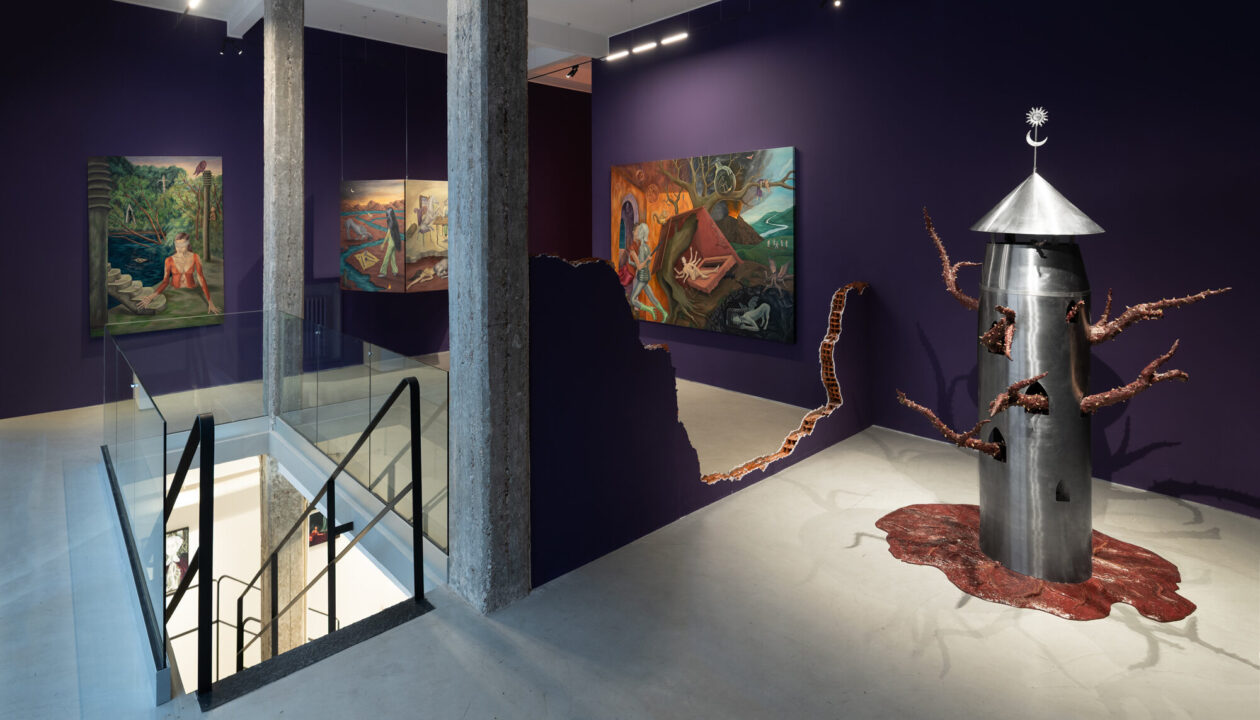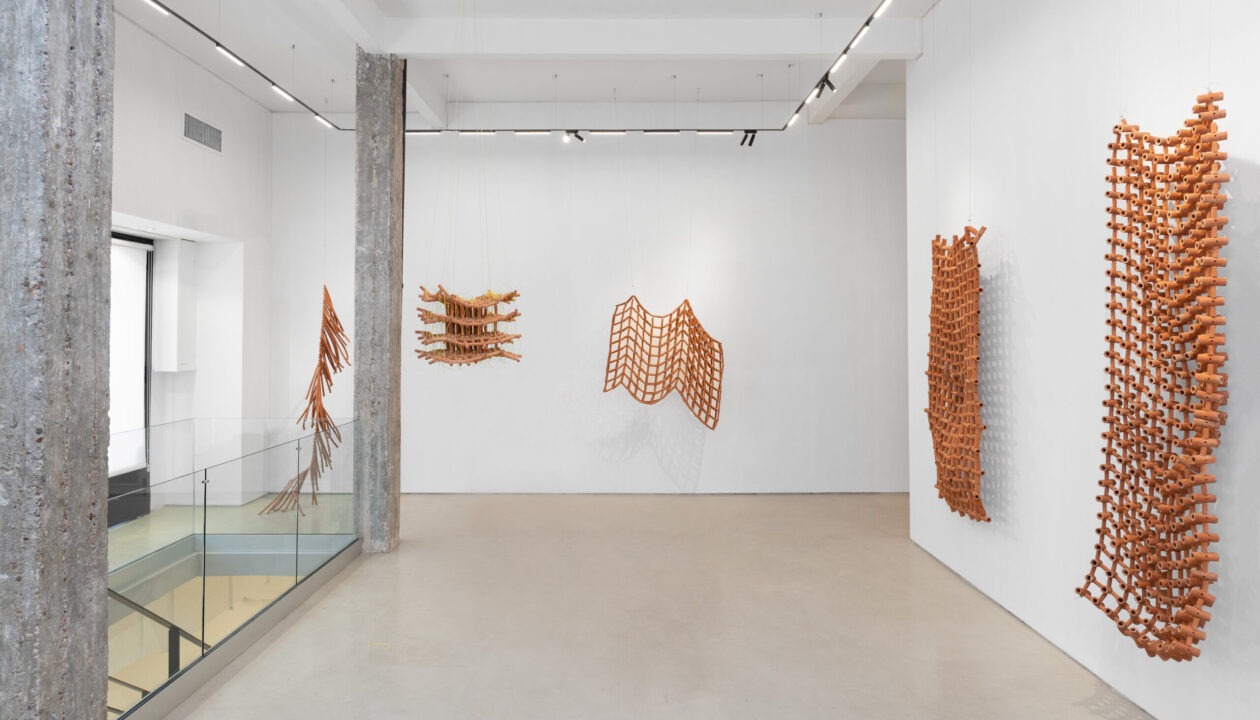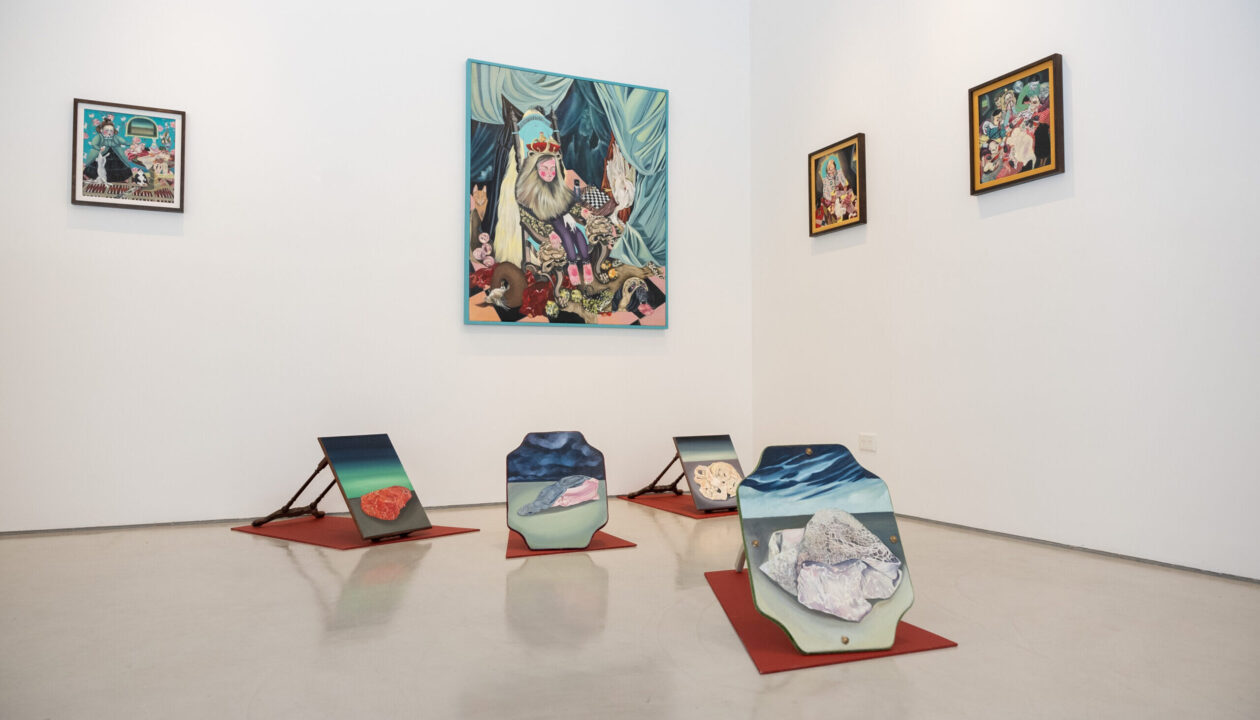Buenos Aires
Principle of innerness
CALFAT /
Curator
Text by Marcos Krämer
Mar. 27, 2025 — May. 24, 2025
About exhibition
Every now and then, a meme resurfaces on social media that seems to bypass almost any news cycle or fleeting aspect of reality. Quite the opposite, in fact—the specific meme I have in mind invites us to reflect simultaneously on the passage of time, technology, and the use of artistic imagery. I’m referring to that image that reads, “No cell phones in sight, just people enjoying the moment,” accompanied by a historical painting—or any seemingly historical image—depicting acts of violence, looting, dispossession, and outrage. In a way, the paintings Verónica Calfat presents in this exhibition operate in several ways as the inverse of that meme.
At first glance, it is evident that Calfat’s craft as a painter contains a wonderfully indiscernible number of layers. In her dense and voluptuous painting, everything vibrates, everything moves, everything seems to crawl out and proclaim its own life. Verónica appears to understand that painting, as a cultural tradition, is a network—but not a network of connections, not a flat web that merely denotes the interrelation of past traditions. Instead, it is a fishing net. The painting Verónica cultivates is a form of trawling, pulling from the depths of Western art history into the present. She retrieves something from the past, and in bringing it into the present, she drags along all the beautiful accidents left behind by dominant, residual, and emerging traditions of painting.
Verónica does not seek out a specific form of representation from the past as a superficial vehicle for conservative nostalgia. Instead, she plunges into the tides of history, pulling up everything that can fit in our present hands. And what we literally hold in our hands today are cell phones.
This time, Verónica’s images do not feature the mysterious or obscure characters of her previous series. Instead, they primarily depict female figures in contemplative postures. Contemplation itself is at the core of this new series. In the precise fold between contemplating the surrounding landscape and the distraction of gazing into the screens in their hands lies the question the artist seems to pose: What should we do with our gaze in a world where surplus value is extracted from it, as if our eyes were tiny workers laboring over screens?
I dare to suggest that Calfat’s response is twofold. On the one hand, she presents a kind of painting that demands a strange contemplation, a laborious slowness opposed to productivity. To access the interior of that netted bag of pasts that are her paintings, we must linger in confusing times and places, where a work-oriented logic of vision—one based on cause and effect, like that of memes—is impossible. Looking at these paintings means immersing oneself in the strange and irregular temporality they propose, so similar to the temporality that deep contemplation can lead us into: that of our own interiority.
But it is not all mere looking, not just passive action—because, as I said, Calfat’s response to that question is twofold. And that is where Ned Ludd appears. That ghost who swept across Europe during the Industrial Revolution, calling for the destruction of new technology. That ghost who was invented so that people would stop looking and start acting. That ghost who was turned into an image in 1813 and who is visually summoned once again for this exhibition.
Uprisings like those of the Luddites require years of gestation, the transmission of mistreatment, entire populations steeping in the knowledge of resistance until centuries erupt in a single day. In these paintings by Verónica Calfat, interiority is only the beginning—what follows is the explosion.
Marcos Krämer
Buenos Aires, Autumn 2025, Room 124A

